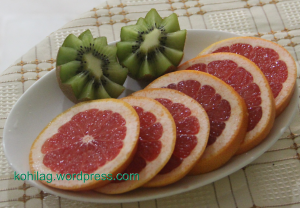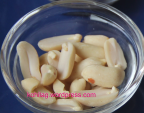If you are concerned about lowering the risk of cancer, take comfort in the fact that “Some simple lifestyle changes can make big difference.” Yes, the primary prevention of cancer is through better lifestyles like healthy eating, regular physical activity, smoking cessation, alcohol moderation, UV-exposure reduction and screen to precancerous lesions.
Maintain a healthy weight
A BMI of 25 or less is optimal. Waist size should also be considered, for higher the amount of body fat deposited in and around the waist signifies higher risk of cancer. Having too much belly fat is linked with an increased risk of colorectal, prostate pancreas, edometrium( linging of the uterus) and breast cancer ( in women past menopause). Higher intake of dietary fat & alcohol and low level of exercise is the leading cause of colorectal and prostate cancer in men. Men tend to accumulate more fats than women!! It is obvious that all men should lose the belly fat to reduce your risk for heart disease, diabetes, and cancer. In women, though estrogen levels dip during the menopause, far more women experiences the symptoms of estrogen dominance-the increase in hunger and the decrease in metabolism, that leads to fat gain around the waist! Gaining weight after menopause will increase the risk of breast cancer in women. So, after 40 years, women should focus on small-frequent -healthy meals with regular physical activity to maintain their weight.
If you are overweight or obese, no worries…………. Just work to lose the weight! Excess body fat can be reduced by lowering the number of calories you consume (lowering the portion size), choosing a low-fat diet, and increasing the physical activity!
Regular physical activity will help reduce your risk of cancer and recurrence through several powerful and synergistic mechanism. Strive for at least 30 mins of moderate aerobic exercise. Combining aerobic and resistance exercise will have a wonderful effect on glycemic control in individual with type 2 diabetes. Enjoy performing some light stretching exercises often.
“EXERCISE IS LIKE A SEAT BELT THAT CAN REDUCE YOUR CANCER RISK”
Eat healthy food
Healthy selections at the grocery stores and at mealtime will help reduce your cancer risk.
- Fruits, vegetables, wholegrains and pulses are generally low in calories and fat. They are considered the good food choices that help you control your weight and reduce your cancer risk. They are also rich in vitamins & minerals that strengthen the immune system. Dark colored beans, vegetables & fruits are high in antioxidants which prevent the cell damage that leads to cancer. The fibers, linked to reduce the cancer risk! Scientists at Cancer Prevention Institute of California have found that a diet high in fruits & vegetables may significantly reduce the risk of cancer.
- Eating lots of vegetables, especially cooked tomato-based foods, rich in lycopene, can lower the risk of prostate cancer in men. Watermelon, grapefruit, red & pink guava are also good sources of lycopene.

- Berries are high in antioxidant properties. Blueberries rank number one in terms of their antioxidant power. Antioxidants neutralizes the free radicals, an unstable compounds that damage the cells and lead to diseases including cancer.
 Grab the blue berries!
Grab the blue berries!
- Eating a diet high in fiber can reduce the risk of colorectal cancer. Dietary fibers protect against breast cancer through inhibition of the intestinal reabsorption of estrogen.
- Soluble fiber has been shown to be more effective in controlling the blood glucose, insulin, which have been positively related to the risk of breast cancer.
- Insoluble fiber are more effective in binding and excreting estrogen.
- Nut eaters are less likely to die of cancer! The unsaturated fatty acids, minerals and other nutrients from heart-healthy peanuts, almonds, walnuts, brazil nuts, pistachios are not only cardio protective, also anti-carcinogenic, and with antioxidant properties, that aid in lowering the cholesterol, inflammation and reducing the risk of cancer. Nuts are goods sources of selenium, that helps destroy cancer cells and aid cells repair their DNA. Enjoy a handful of nuts with fresh green salads rich in fibers, vitamins & minerals and antioxidants.
- Choose wholegrain, for refined foods are high in GI, the glycemic index. Research has shown that women even with BMI < 25, had an increased risk of breast cancer with an increasing amount of rapidly absorbed carbohydrates!!!
- Limit eating processed meat like – smoked, cured, salted, added preservatives, for the diet high in processed meat is linked to bowel cancer!
- Controlling the intake of foods high in calories, fats and sugar will help reduce the risk of bowel and breast cancers!
- Culinary herbs like garlic, mint, basil, oregano, cilantro (coriander leaves), chives, parsley not only add flavor and color to meals, they also help to prevent and manage heart disease, cancer and diabetes!


- Choose baking, boiling, steaming or stir frying as healthy cooking options, for they limit the use of fat and reduce the risk of being overweight! Broccoli is a good source of cancer-protective flavonoids. Micorwaving destroys 90% of its flavonoids. So, it is wise to steam it, or stir fry this vegetable to hold the cancer preventing flavonoids.
Go moderate on alcohol.
Alcohol is a known cause of mouth, throat, liver, colon and rectum cancers. People who drink alcohol should limit their intake to no more than a drink per day.
Protect yourself from the sun
Many skin cancers are caused by excess exposure to UV rays from the sun or other sources. Stay out of the sun between 10 am and 4 pm, when the sun rays are strongest. Avoid tanning beds, for these are just as damaging as UV rays.
Don’t use tobacco
Cigarette smoking accounts for at least 30% of all cancer deaths. It has been linked to various types of cancer, including the cancer of lung, bladder, cervix and kidney. Lung cancer is the leading cause of cancer death in both men and women.
Good, if you don’t smoke. But exposure to second hand and sidestream smoke might increase the risk of lung cancer! So, provide a safe, enjoyable and accessible environments for yourself and your family.
You have the power, to reduce your cancer risk, by having a healthy diet, being physically active and maintaining a healthy weight.
References
- Yikyung Park, Louise A Brinton, Amy F Subar, Albert Hollenbeck, and Arthur Schatzkin. Dietary fiber intake and risk of breast cancer in postmenopausal women: the National Institutes of Health–AARP Diet and Health Study. Am J Clin Nutr September 2009 vol. 90 no. 3 664-671
- Wanqing Wen, Xiao Ou Shu, Honglan Li, Gong Yang, Bu-Tian Ji, Hui Cai, Yu-Tang Gao, and Wei Zheng. Dietary carbohydrates, fiber, and breast cancer risk in Chinese women. Am J Clin Nutr January 2009 vol. 89no. 1 283-289
- Martin Lajous, Marie-Christine Bourton-Ruault, Alban Fabre, Francoise Clavel-Chapelon, and Isabelle Romieu. Carbohydrate intake, glycemic index, glycemic load, and risk of postmenopausal breast cancer in a prospective study of French women. Am J Clin Nutr May 2008 vol. 87 no. 5 1384-1391
- Ernest H Rosenbaum, M.D. David Spiegel, M.D. Patricia Fobair, L.C.S.W., M.P.H. Hollyl Gautier, R.N. With Louise Maffitt, B.F.A. Everynone’s Guide to Cancer Survivorship; A Road Map for Bette Health. 2007
- www.cancer.ie
- http://www.aicr.org










